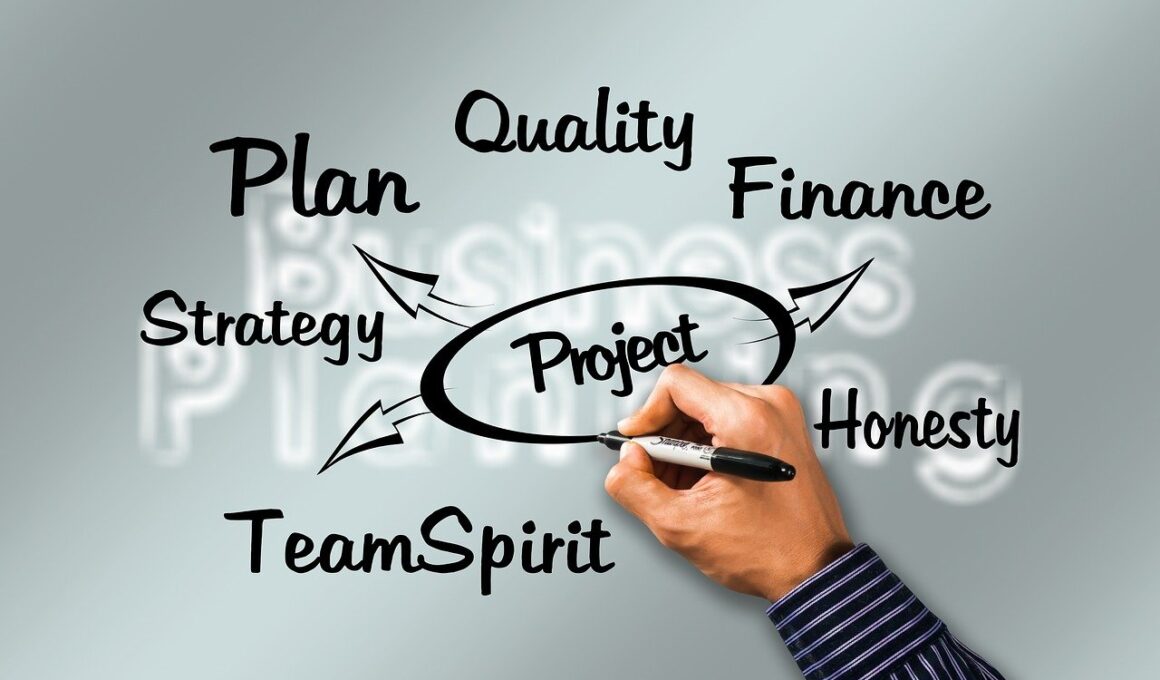Best Practices for Communicating Community Project Goals to Followers
Effectively communicating project goals is fundamental for community engagement. It ensures that everyone understands what to expect and how they can contribute. Begin by clearly defining your objectives in simple language. Use accessible terms to describe the project and its intentions. Clarity helps in avoiding misunderstandings, establishing trust among stakeholders and participants. Utilize compelling visuals, such as graphics and infographics, to supplement your messages. Images can illustrate concepts quickly, leading to better retention. Provide a roadmap outlining the project’s timeline and milestones. Make sure that there are regular updates at every phase of the project. By doing so, you not only keep followers engaged but also accountable to the project’s success. Remember to utilize various platforms to disseminate information, including social media, newsletters, and community meetings. Each platform can reach different demographics within the community, enhancing overall communication. Finally, encourage feedback from community members. This engagement fosters a sense of belonging and ownership among participants, ensuring they feel valued and heard throughout the project.
Another effective strategy is to create specific, measurable, achievable, relevant, and time-bound (SMART) goals. This methodology helps frame your project goals in a structured format that followers can easily grasp. Encourage collaboration by involving community members in the goal-setting process. This participatory approach not only strengthens buy-in but also taps into diverse perspectives. Consider hosting workshops or brainstorming sessions where everyone can voice their opinions and ideas. Highlight the benefits each member can gain from the project’s success, prompting them to be more proactive. Sharing stories or case studies from similar projects can further illustrate the potential positive outcomes. If possible, connect these narratives to personal experiences within the community. By doing this, the goals become not just abstract concepts but relatable objectives. Use social proof to validate your goals. Show how other communities have succeeded with similar projects, attracting attention and admiration. This enhances credibility and reflects the tangible outcomes that your project can achieve for its followers.
Keeping Communication Open and Transparent
Maintaining open lines of communication throughout the community project is essential. Transparency builds trust and helps retain loyalty. Hold periodic community meetings where updates can be shared and questions can be answered. Such gatherings are an invaluable opportunity for members to express concerns or suggest improvements. Always document these meetings and distribute minutes to make sure everyone, even those who could not attend, is informed. Additionally, leverage digital tools such as emails and group chats for timely updates. Consider creating an online platform, such as a dedicated social media group, to cater to real-time interactions about the project. This space can serve as a hub for sharing insights and fostering collaboration. Always be approachable, allowing community members to reach out to project leaders directly with their queries or suggestions. This responsiveness encourages an open dialogue, making your followers feel more engaged. Moreover, express gratitude for feedback, reinforcing that every voice matters. When community members see that their input leads to tangible changes, they are more likely to remain invested in the project.
Celebrate small victories throughout the project timeline. Highlighting achievements, no matter how minor, can invigorate the community and maintain motivation. Create newsletters or use social media posts to announce these milestones, showcasing both the collective effort and the success. Engaging visuals should accompany these updates to further capture attention. Incorporate engaging narratives around these achievements, emphasizing team contributions and the positive impact on the community. Furthermore, consider organizing celebratory events to mark these milestones, inviting all participants to share in the success. These gatherings not only honor the hard work of the community but also strengthen bonds among members. Such events act as reminders of the collective effort and the importance of teamwork. In addition, consistently share lessons learned throughout the project. Not every goal will be met flawlessly, and sharing setbacks is equally important. Community members will appreciate the honesty, and it enhances the learning culture within the group. Encourage members to continue sharing their thoughts on these lessons to enrich future initiatives, thus fostering continuous improvement.
Leverage Technology for Effective Communication
In the digital age, technology plays a crucial role in enhancing communication. Utilize online project management tools to keep everyone in the loop regarding responsibilities and progress. Platforms like Trello or Asana can help visualize the workflow and promote accountability among team members. Create shared documents to facilitate collaborative editing and input in real time. This approach encourages ongoing participation, making the project feel like a community effort. Hold virtual meetings via platforms like Zoom for broader outreach, allowing more people to participate regardless of their physical location. Archive these sessions so that those who couldn’t attend can view them later. Moreover, ensure that the communication remains accessible; consider providing translations or accommodations for individuals with disabilities. Making the information available in diverse formats reaches a wider audience. Social media can also deliver quick updates, running polls or questionnaires to gauge community sentiment on different aspects of the project. Engage followers by making them part of the decision-making process through interactive content. This inclusion fosters a deeper connection, as members feel more invested in the project challenges and milestones.
Storytelling is another effective communication technique that can resonate more powerfully than mere facts. Encourage project leaders and community members to share their personal stories related to the project. These narratives foster emotional connections, clarify project goals, and inspire collective action. Utilize various formats, such as videos, blogs, or podcasts, to disseminate these stories across different channels. Highlighting individual contributions illustrates the project’s collective impact, building a strong sense of community. Don’t shy away from sharing challenges faced and how they were overcome. Such transparency enhances the perceived authenticity of the project, creating an atmosphere of shared learning. By recapping successes and struggles, you cultivate resilience within the community, fostering more robust discussions about the project’s future. Emphasizing the emotional elements will ignite more conversations and inspire action among your followers. Utilize powerful imagery and relatable content within your stories to enhance impact. Engaging your audience on a personal level can significantly strengthen connections, making them feel integral to the success of community efforts. Remember, people relate more to stories than numbers; evoke emotions and they will connect deeply with your goals.
Conclusion: Engaging the Community Effectively
Engaging the community effectively requires continuous dialogue and collaboration throughout your project. Consistent communication practices will ensure that followers feel informed, involved, and valued. Formal meetings, newsletters, or online platforms can serve to keep everyone updated and aligned with project goals. Additionally, establish clear lines of feedback and incorporate community suggestions into decision-making processes. The more involved the community feels, the more likely they are to contribute actively to the project’s success. Regularly sharing updates and celebrating achievements is a fantastic way to maintain enthusiasm and commitment among participants. Moreover, storytelling, transparency, and innovative use of technology play vital roles in keeping the community engaged. Each communication effort should focus on building relationships and fostering a sense of belonging. With a dedicated approach to communication, project goals can transform from ideas into collective community aspirations. This profound connection paves the way for sustainable community projects with lasting impacts. Ultimately, a well-informed and engaged community is a powerful ally that can amplify your project’s success and reach, ensuring every objective is not only met but also exceeded.


